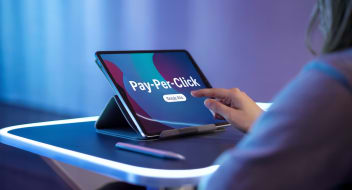Showing top 0 results 0 results found
Showing top 0 results 0 results found

The marketing landscape is getting more competitive by the day. That means it’s tougher to market and sell your products and services. How can you ensure that your business is the one that stands out?
Two words: emotional marketing.
In this article, we’re going to break down how to tap into your customers’ emotions in order to improve the customer experience, stand out from the competition, and ultimately get more sales.
What is emotional marketing?
Emotional marketing is a great way to stand out from the crowd. Essentially, it’s the process of using persuasive and emotional messaging in your advertising to get the customer to feel something and build a connection with them. When you have a connection with a viewer or potential customer, they’ll be much more likely to spend money with you.
Emotional marketing typically taps into a single emotion, like happiness, excitement, fear, or anger. Emotions like this can help push your website visitors in the direction of a purchase. If you offer a helpful service that can grow a business, tap into a sense of excitement.
Consumer protection groups or law firms might tap into anger or sadness to get their potential customers to schedule a consultation. Toy companies are likely to tap into a website visitor’s sense of fun and happiness.
Colors play a major role in evoking emotions. This is called color psychology, and many businesses and organizations use this tactic. Therapists might use cool blue or clean white to evoke a sense of calm, or dating apps might use shades of reds to evoke a sense of passion. Take a look at this chart from Color Wheel Pro that breaks down what types of colors correspond with different emotions.
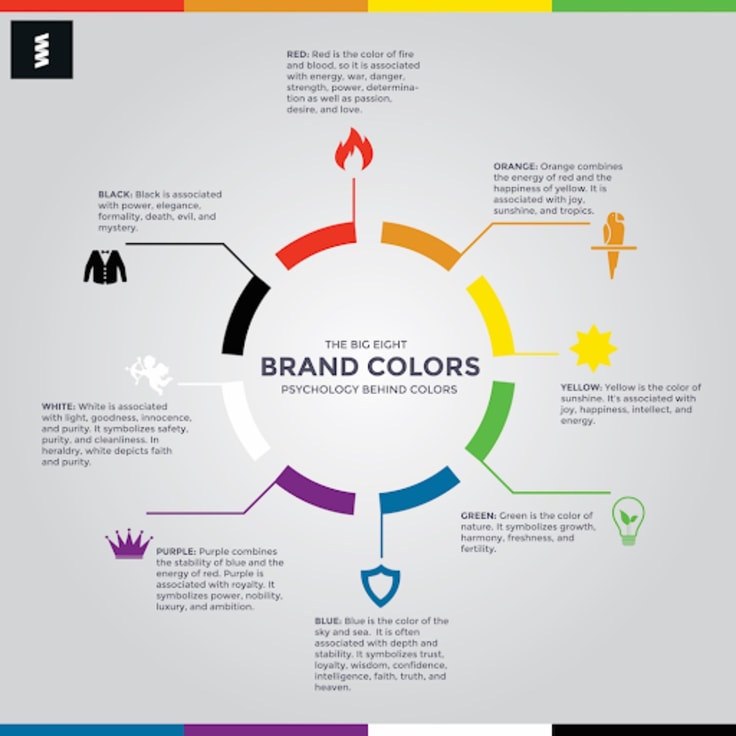
Today’s marketing relies on building this human connection! In this article, we’re going to break down how you can use emotional marketing to your advantage and make more sales.
Inspire FOMO by creating a sense of urgency
No one likes to feel left out so, if you can create a sense of urgency with your marketing and content, you’ll inspire fear of missing out (FOMO) in your target customers.
This is effective because it taps into people’s risk-aversion. In short, people would rather make a quick decision rather than regret not making the purchase later.
You can inspire FOMO with your content by using time-sensitive language, timers, or even highlighting the amount of stock you have left. This type of marketing will help improve your conversion rate!
Here are a few examples of businesses that do this well.

Venngage, an online infographic maker, tries to inspire a feeling of FOMO when promoting their webinar as part of their guide to what infographics are. The phrase “save your spot” implies that there’s a limited number of seats available, so website visitors have to act fast to claim one!
This strategy is particularly effective for a company like Venngage — many people don’t know how to make infographics, or even where to start. By offering webinars, and tapping into people’s FOMO, Venngage can get more conversions.
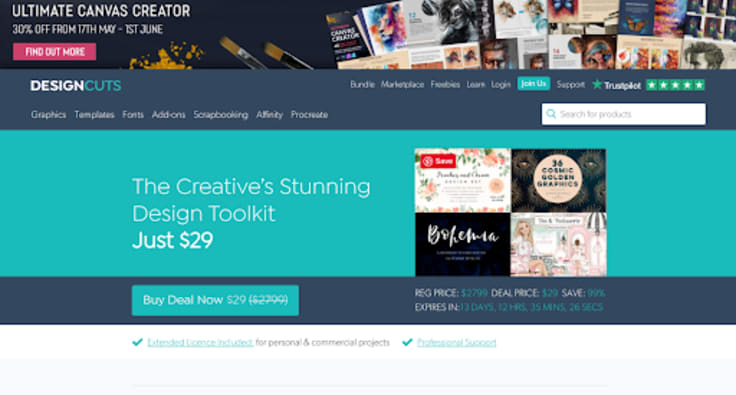
DesignCuts, who provide different tool bundles for graphic designers, does something similar with their sales. They often let visitors purchase multiple bundles for a lower price, but there’s a catch: they’re limited-time offers.
To tap into a customer’s FOMO, they have a timer that shows just how long they have to take advantage of this deal. Using timers in this way is a sure-fire way to encourage purchasing, as the viewer knows it won’t last forever.
Promote benefits, not features
A lot of businesses make the mistake of focusing on how great their products’ features are when they should be stressing the benefits. Most of the time, people aren’t shopping for a specific item — they’re looking for the best solution to a problem they have. So, you need to show them that you have it.
In your marketing, focus on how your products and services can help your clients, rather than diving into their specifications. This will help your customers feel like you understand their needs and further build an emotional connection with them. Promoting benefits in this way inspires emotions like trust, a sense of calm, and reassurance that your business can solve their problems.
Let’s take a look at some examples of companies that do a great job of this.
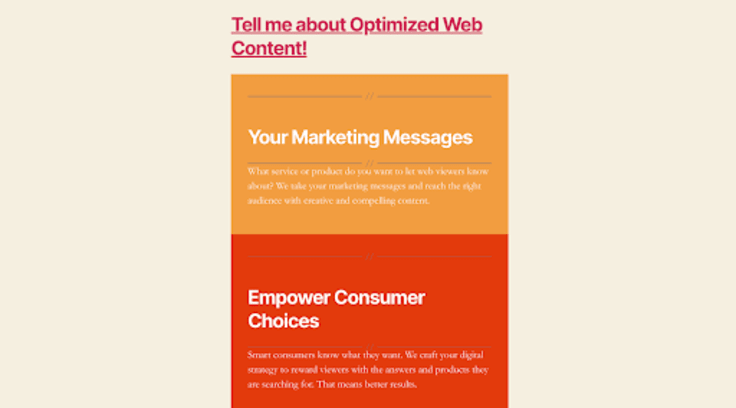
For instance, Hill Web Creations, a digital marketing firm based out of Minneapolis, showcases the benefits of their services on their homepage. Scrolling down, you’ll see that they have a section that shows they truly understand their customer pain points and what they’re likely to be looking for help with.
When a potential customer sees these benefits that the company can provide, they’ll feel relieved and understood, as well as excited that someone will finally help them with their needs. It’s the benefits here that matter the most, and outlining them in this way will stir up excitement in their ideal customers.
As a marketing firm, they provide copy, design, and marketing services for their clients, but that’s not what’s advertised here. Instead, they write about what customers can expect to achieve by working with the company. They explain that they help their clients to empower their customers, reach the right audiences, and get better results. This is far more emotive and engaging, and something you should try to replicate by stressing the benefits of your products or services on your website.
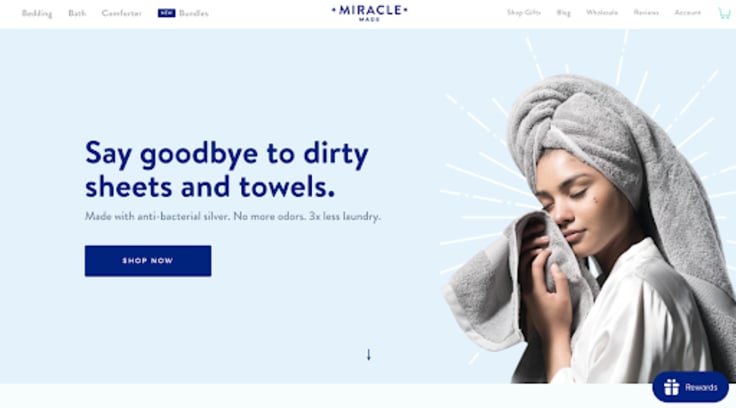
Similarly, Miracle Brand, a bedding and towels retailer, highlights the benefits of their products. Although they do mention what makes their products unique — namely the anti-bacterial silver and bamboo they’re made from — the company focuses more on what benefits they bring.
These features keep towels and sheets fresh, clean, and odor-free. Promoting the benefits here, in conjunction with the clean blue background and the relaxed woman evokes emotions like a sense of calm and relief.
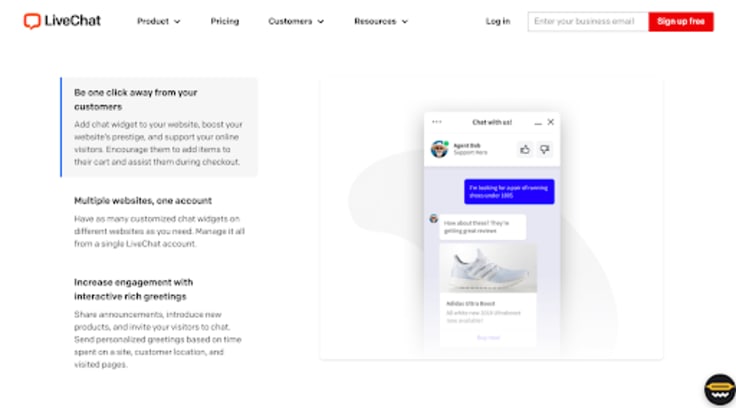
Finally, LiveChat showcases the features of their customer service chat program on their product tour page. Here, they outline exactly what LiveChat can do for a business.
Rather than simply saying they’re a live customer service chat program, they say that they can help you “engage customers,” “improve your efficiency,” and “monitor your team’s performance”. It might seem like a small difference, but it has a huge impact and can really help you to build a stronger connection with website visitors.
Ensure your customers feel understood by addressing their pain points
More than anything, your customers will want to feel like you understand them before they decide to spend money with you. If you can create blog content that answers their questions and addresses their pain points, you can tap into this and encourage them to further their relationship with you.
Additionally, if you answer the questions that people are asking through search engines, this can improve your search engine optimization (SEO) and give your rankings a boost. This can help you to market your business and reach the right people without ads.
Here are a few examples of businesses that address their customers’ pain points in their content.
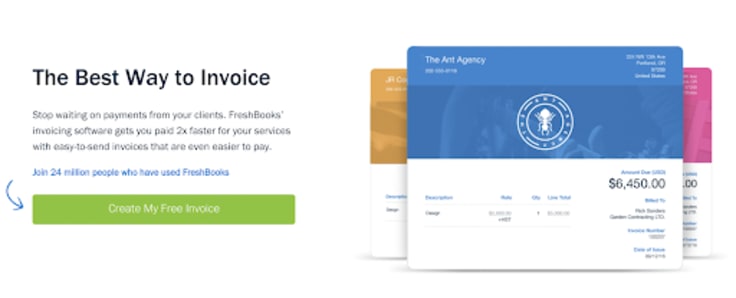
FreshBooks, for instance, is an online accounting software provider. Many of their customers are freelancers and small business owners who do their accounting on their own, so FreshBooks offers their potential customers helpful tools like free invoice templates to draw them in and make them aware of the company’s services.
New freelancers and small business owners are likely to be looking for these types of templates and services to get their own accounting started. Providing these templates for free helps customers know that FreshBooks understands their needs, and will encourage them to work with the company in the future.

Similarly, Backlinko, another digital marketing expert, has a lot of blog content that addresses customer pain points as well. For instance, they have a guide on how to write a blog post.
Their target audience is made up of marketers and business owners who are looking for SEO and content creation help, so this content is sure to attract the right people. It also addresses their target customers’ pain points, showing that they understand their audience and genuinely know how to help them. This will make website visitors feel relieved and supported, which could lead to them paying for Backlinko’s services.
Use imagery to spark your customers’ imagination
If you can help your ideal customers imagine themselves using your products or services, they’ll want to buy them! One of the most effective ways you can do this is by using images of people who represent your target audience. This is a powerful emotional marketing tactic, as it will spark your customers’ imaginations and get them to start thinking about how much better their lives could be if they use your products or services.
Let’s look at a few examples of websites that use imagery in this way.

Best Value Schools is a comparison website that helps prospective students to find the best higher education path to suit their needs and dreams. And, they help potential customers to imagine themselves on their graduation day by using powerful images at the end of pieces of content like their list of the most affordable online MBA programs.
At the end of their guides, they have a Degree Finder section, which sits beside the photo of a woman in her cap and gown. This image is sure to excite anyone who is considering going back to school, and they’ll imagine themselves in the woman’s shoes at the end of their course.
This image could be just enough to encourage people to use the Degree Finder and find their ideal program, which will bring them one step closer to their own graduation.
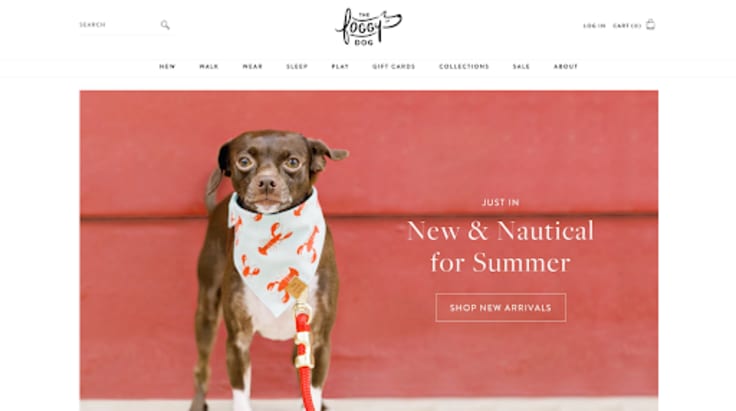
Similarly, The Foggy Dog, an online dog accessories store, helps potential customers imagine how adorable the company’s products would look on their own dogs.
Take a look at their Mommy and Me sets, for instance. They have a variety of scrunchie and scarf combos that a customer can wear and match with their pup. When they see charming images like this, customers will begin to imagine how much these products could enrich their lives. This could be just enough to push them to make a purchase.
Provide social proof to earn your audience’s trust
If you want customers to shop with you, you need to earn their trust. 72% of consumers say that they wait until reading reviews before making a purchase (TestimonialEngine)! So, you can help earn their trust and push them towards buying something with the help of reviews from customers, testimonials from clients you have helped, and case studies outlining your success stories, for instance.
Here are a few examples of websites that have incorporated social proof into their marketing effectively.
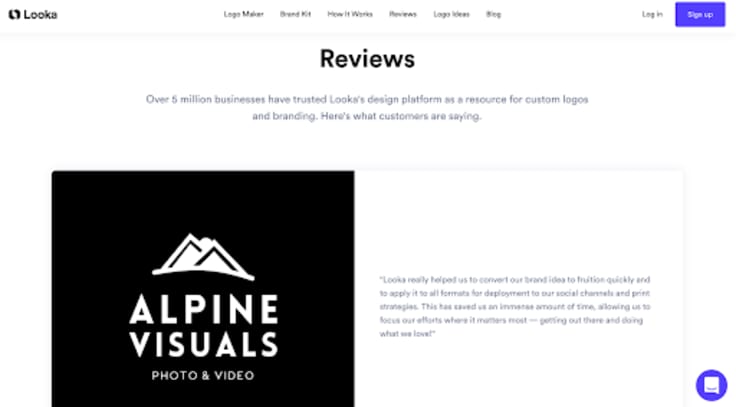
Looka, an online logo maker, incorporates reviews into their website as a form of social proof.
What’s unique about these is the form of the reviews — instead of just a simple star rating, you actually get to learn about the business and see the results Looka was able to produce. This is so effective because a prospective customer can see a variety of different examples of Looka’s work!
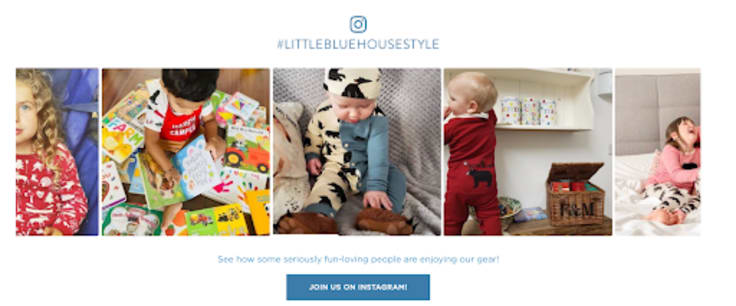
Little Blue House, a pajama retailer, shows off social proof with user-generated content at the bottom of their homepage. They have a carousel featuring some of the cutest images from #LittleBlueHouseStyle on Instagram, where people post pictures showing their products being worn by their families.
If people are posting about these products on social media, they must love them! Sharing user-generated images like this is a great way to earn the trust of your prospective customers, and it could also encourage others to share more photos of your products in action. If you’re lucky to have people posting about the products or services you provide, make the most of it!

LiveChat also showcases evidence of their great work on their customer success stories page. Scrolling through, a potential customer can see actual stats and data behind the successes of the company’s existing or previous clients. PureVPN, for instance, increased their sales by 20% and reached customer satisfaction levels of 94%!
If your business has a lot of clients, this is a great way to show off customer success stories. Stats and data show potential customers that they can be just one of many happy clients using your services.
Key takeaways
Emotional marketing is nothing new, but it’s an effective tool that consistently gets results. If you want to make as many sales as possible, you need to be building strong and genuine connections with your target customers, and emotional marketing is a great tool for this.
Take these tips on board and it won’t be long before you have a much larger and stronger base of loyal customers. Get to work!
